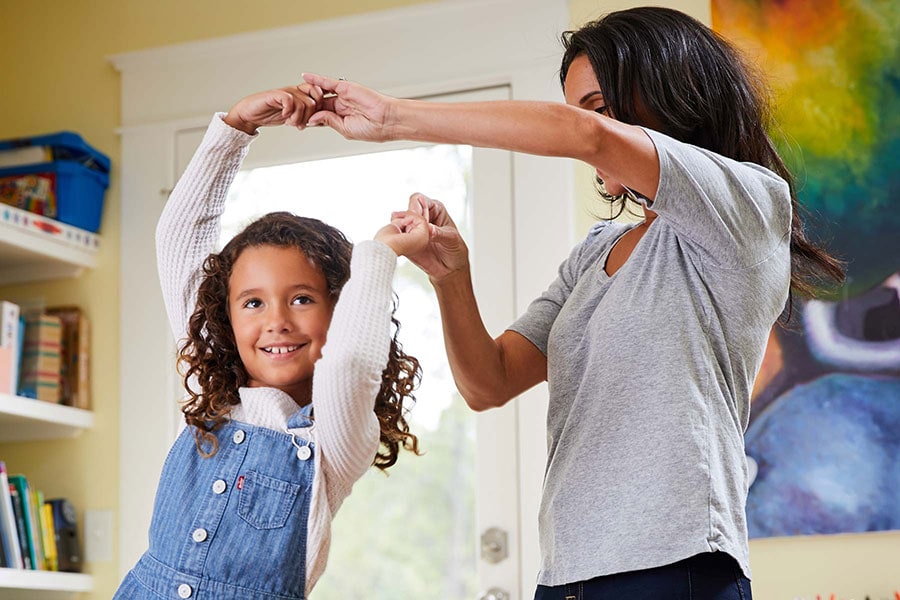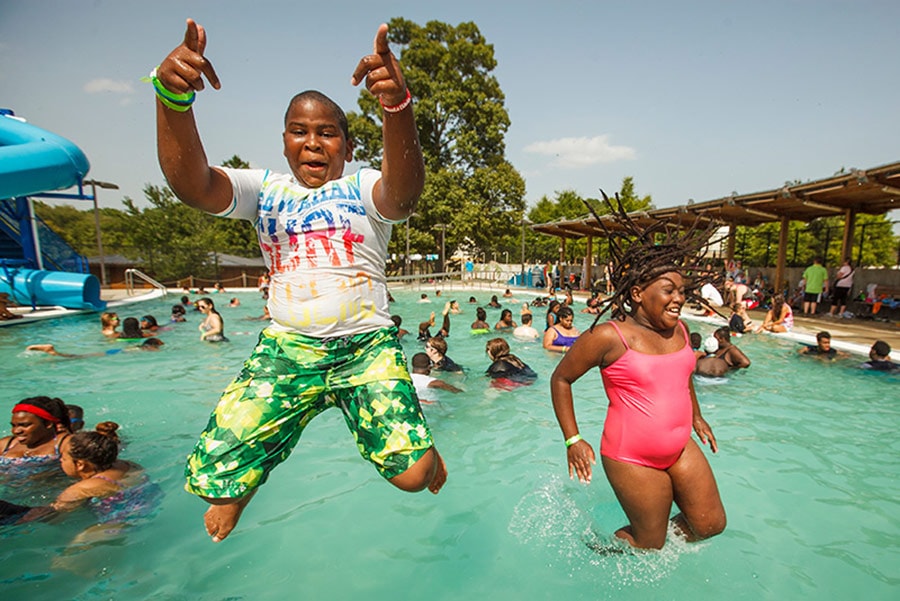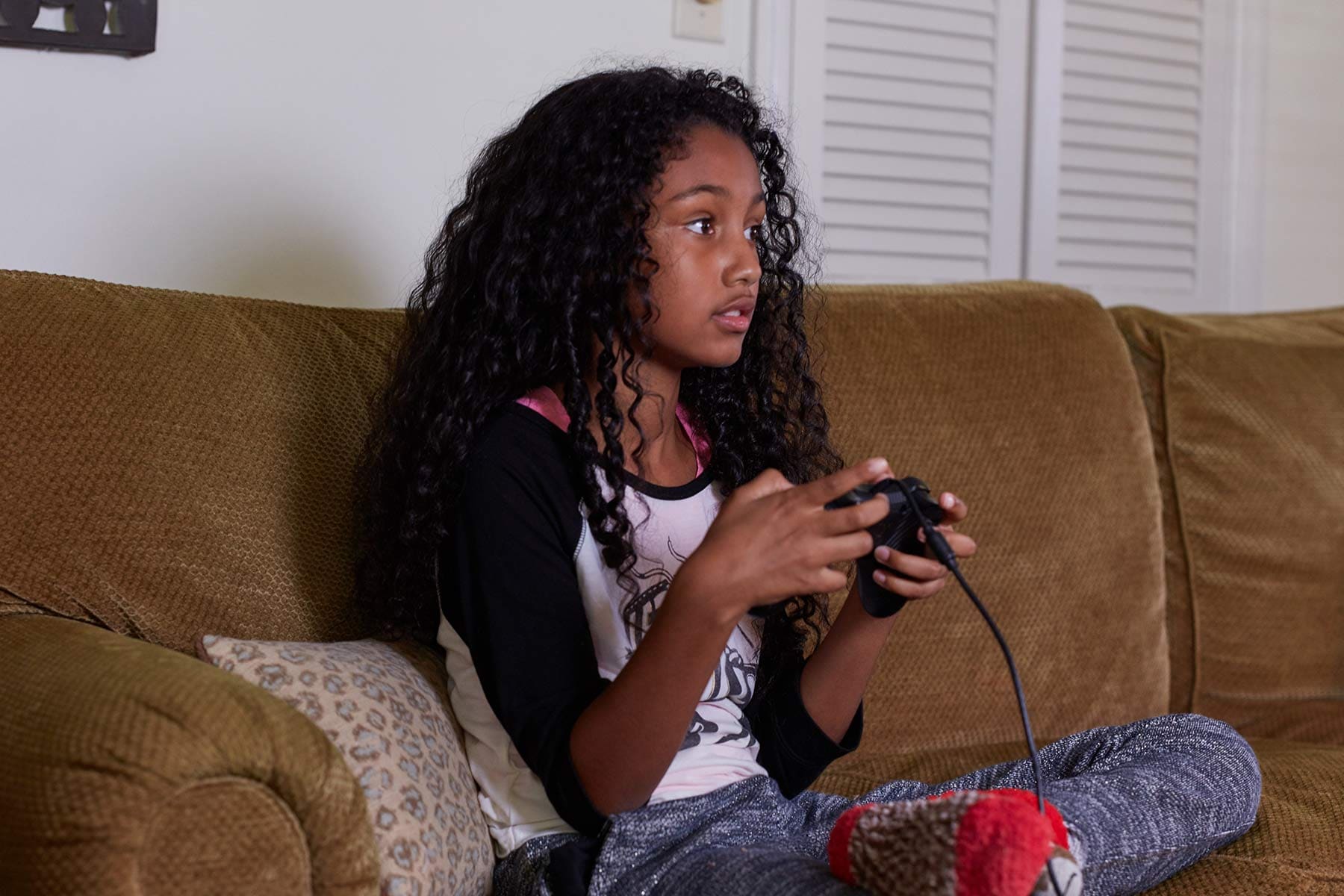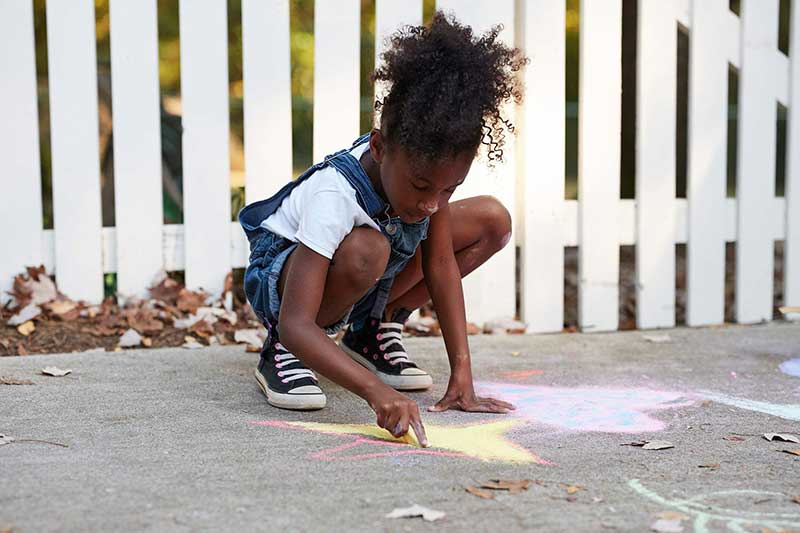Basic Movement Skills: Milestones for Kids
Kids’ ability to be active is an important part of physical literacy that starts at birth. Through a combination of play and education, kids develop basic movement skills that allow them to engage in a variety of games and activities.
Skills like balancing, running, jumping, throwing, lifting and swimming set the foundation for lifelong physical activity. The good news? There are simple ways parents can help their kids get moving at every milestone.
In this article:
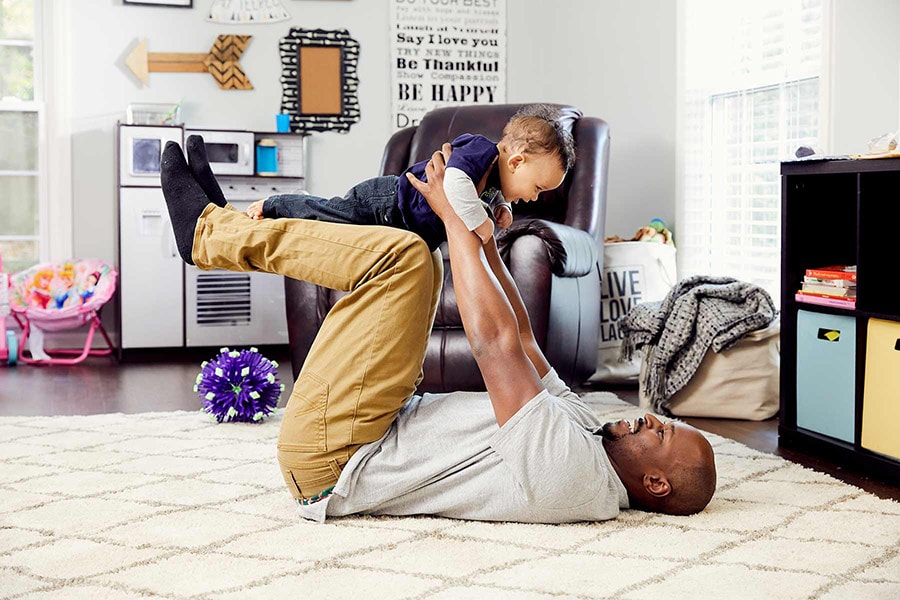
Infancy: Building basic motor skills
It’s important that babies get an early start on developing basic motor skills. Everything is brand new for your baby, so they need your help to start being active. During their infancy, your role is to initiate play, offer toys and guide them through motions like grasping, rolling over, sitting, crawling and walking. You can help develop their growing body and muscles by:
- Shaking a rattle or toy and encouraging them to reach for it.
- Encouraging them to kick and splash in the bathtub.
- Practicing baby pull-ups by guiding them up into a sitting position with your hands.
- Playing a gentle game of airplane (once they’re strong enough to sit up—around 6 months) by lifting them in the air with your legs.
- Bicycling their legs. Bring them toward their chest one at a time, as if they’re pedaling.
- Practicing tummy time.
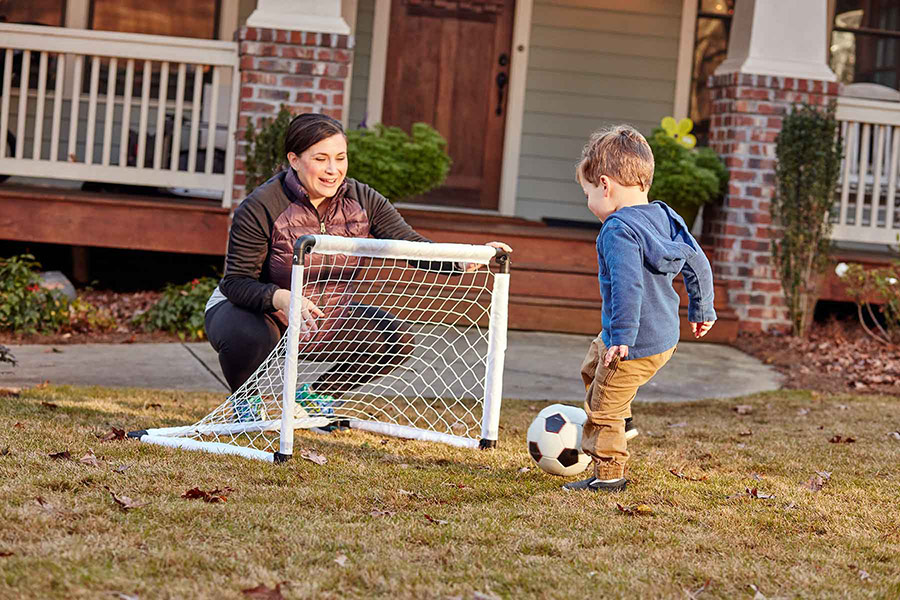
Toddlers: Using basic skills to play and explore
Toddlers are naturally active and curious. Unstructured, independent play is essential for toddlers while they develop coordination and build fundamental skills.
You can give your child the freedom to explore and experiment through unstructured play while still modeling healthy activities of your own. Give toddlers access to plenty of simple, engaging activities, and model movement skills like running, jumping, throwing, kicking and swimming for them. These skills all require balance, agility and strength.
Here are some ways you can encourage them to channel their energy in a safe, fun environment:
- Encourage your toddler to climb stairs or onto chairs and sofas. Stay close and be ready to catch your child if they lose their balance.
- Play catch, soccer or kickball to build hand-eye coordination.
- Turn on music and have a dance party.
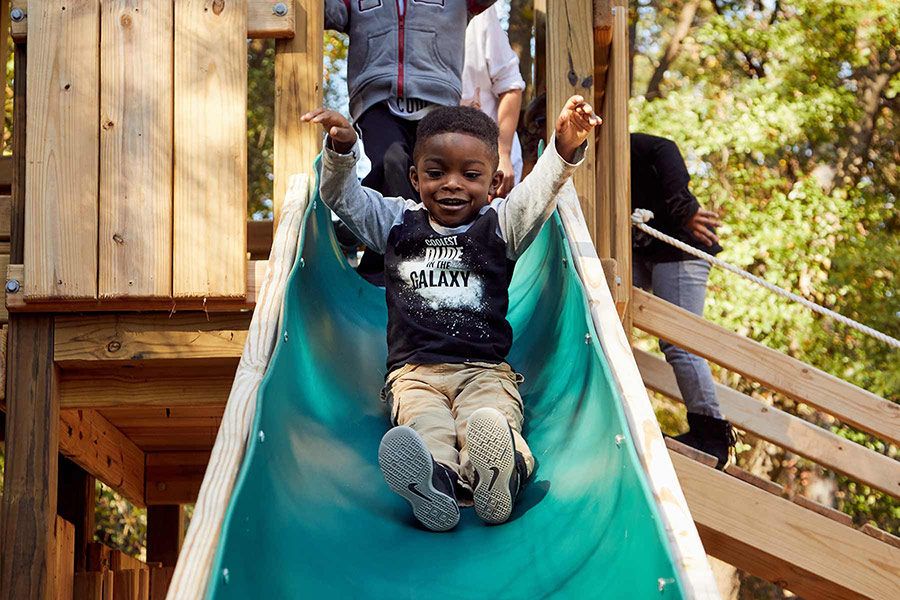
Preschool age: Improving skills and developing independence
Make physical activity social. Peer learning plays a big role in building on your child’s fundamental skills and allowing them to develop independence.
According to The Aspen Institute, the freedom to experiment and the ability to form a social connection with friends as co-players are among the top motivators for kids to stay active. Encourage your child to participate in different activities and sports, and don’t forget to ask them what they enjoy. Some of our favorite activities for improving kids’ movement skills include:
- Riding bikes in the neighborhood.
- Playing on the jungle gym.
- Signing up for a sport or activity.
- Helping with household chores like cleaning their room or cooking.
- Walking them to school.
- Playing jump rope or freeze tag.
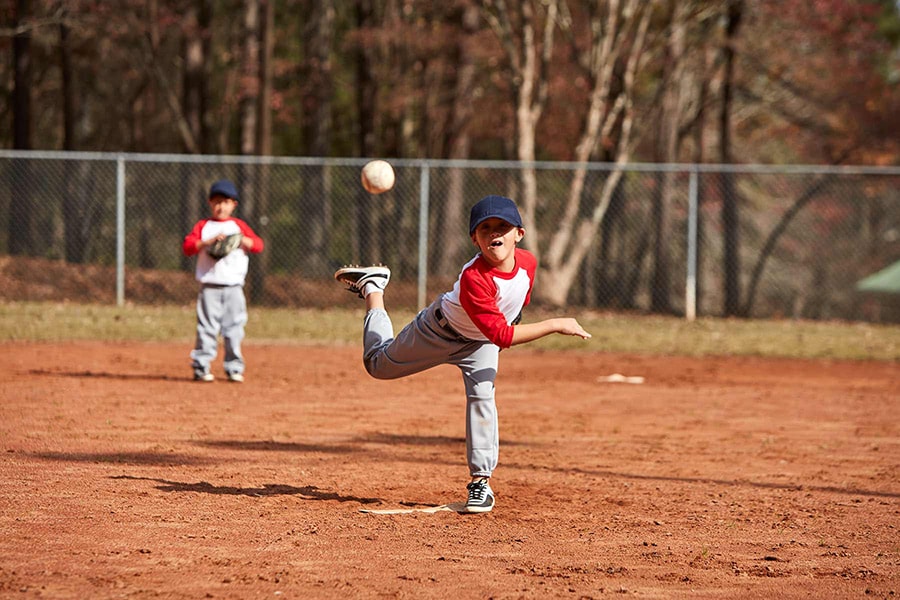
Adolescence Improving physical literacy to be active for life
According to the American Academy of Pediatrics, school-aged children and teens should aim for at least 60 minutes of physical activity per day. And at least 3 times a week, they should be getting vigorous exercise—running, swimming or playing sports such as basketball or soccer.
It’s important to provide young people with the opportunity and encouragement to participate in a variety of physical activities. More options mean they have a better chance of figuring out what they enjoy and sticking with it. Check out our tips for supporting school-age children and teens in sharpening their skills:
- Introduce activities to build your child’s strength, like climbing exercises and swimming, early on to increase muscle mass.
- Add activities that require paying close attention and moving in different directions, like throwing, catching or hitting balls.
- Begin bodyweight exercises (think push-ups and sit-ups) at adolescence, around ages 10 to 12. Start with 2 to 3 days per week to help build strong muscles.
- Work together to identify gaps in fundamental movement skills, confidence or a desire to be active. Remember to respect your child’s feelings while coming up with a plan for how they can get moving.
- Improve skills and strategy through coaching and camps.
- Encourage your child to sample different activities until their mid-to-late teenaged years. Specialization at a young age can leave kids burned out.
Physical activity isn’t easy for all kids. If you notice your child is avoiding physical activity, check out these outside-the-box ideas to offer support and inspire them to get moving.
